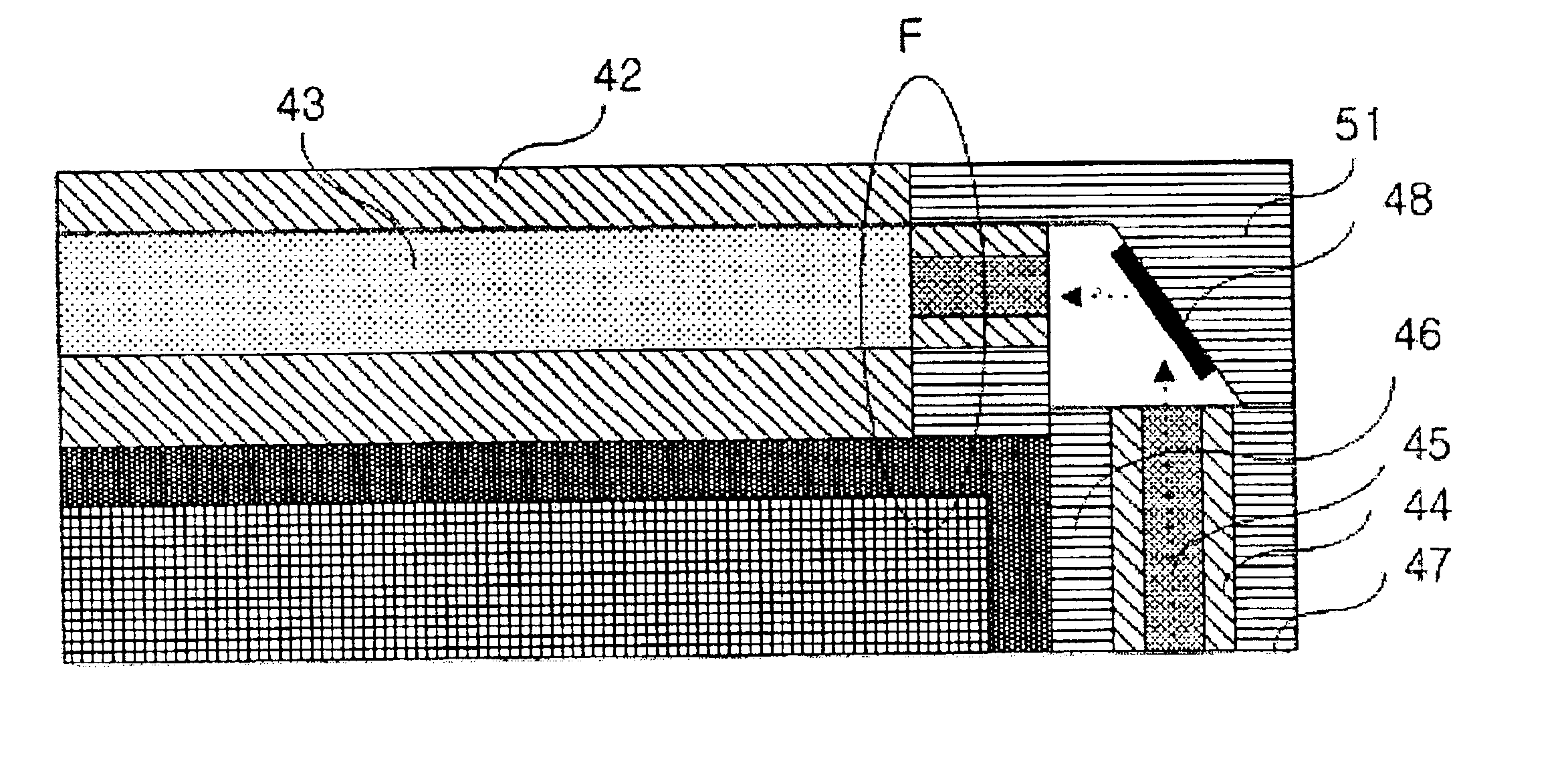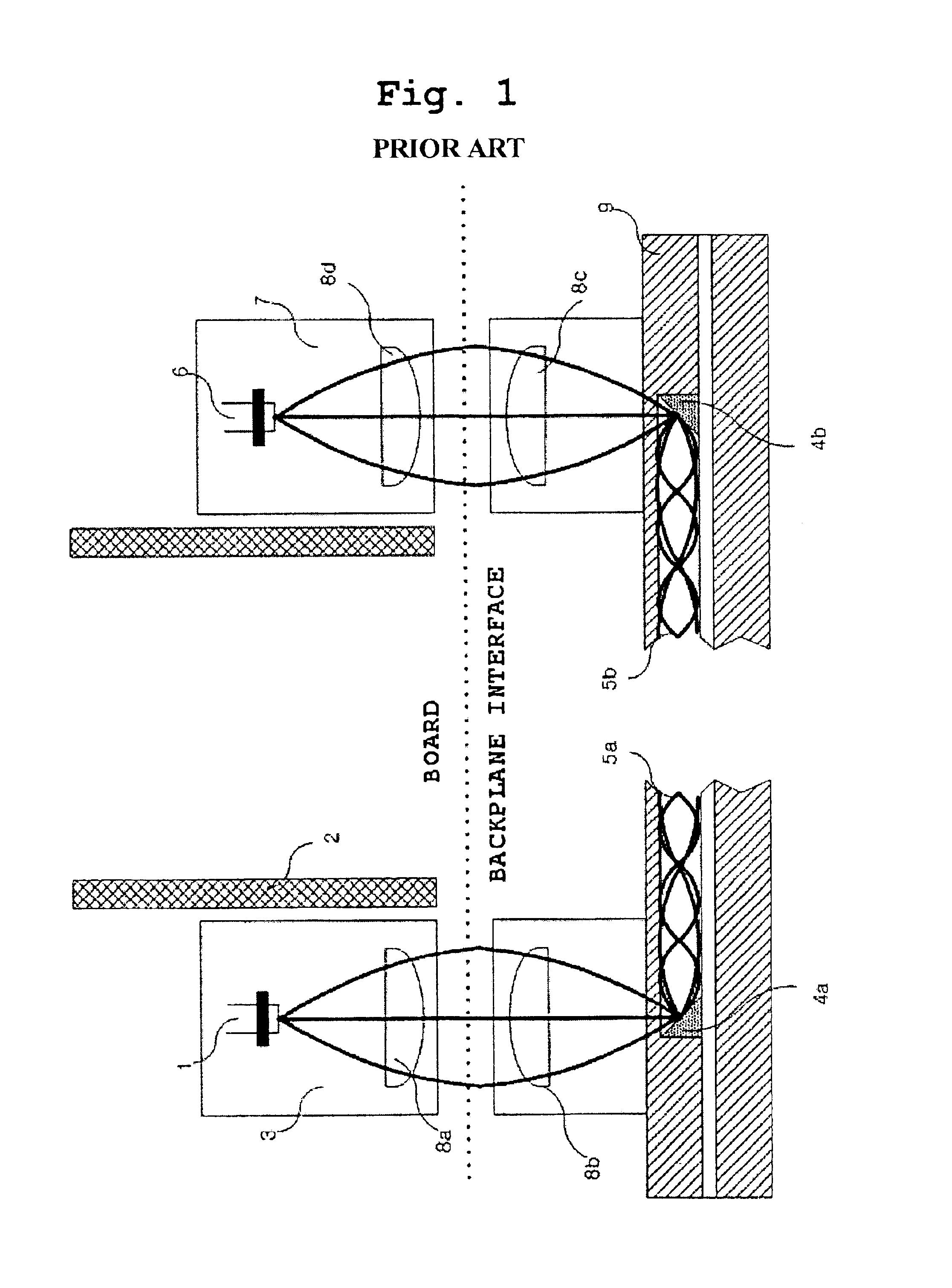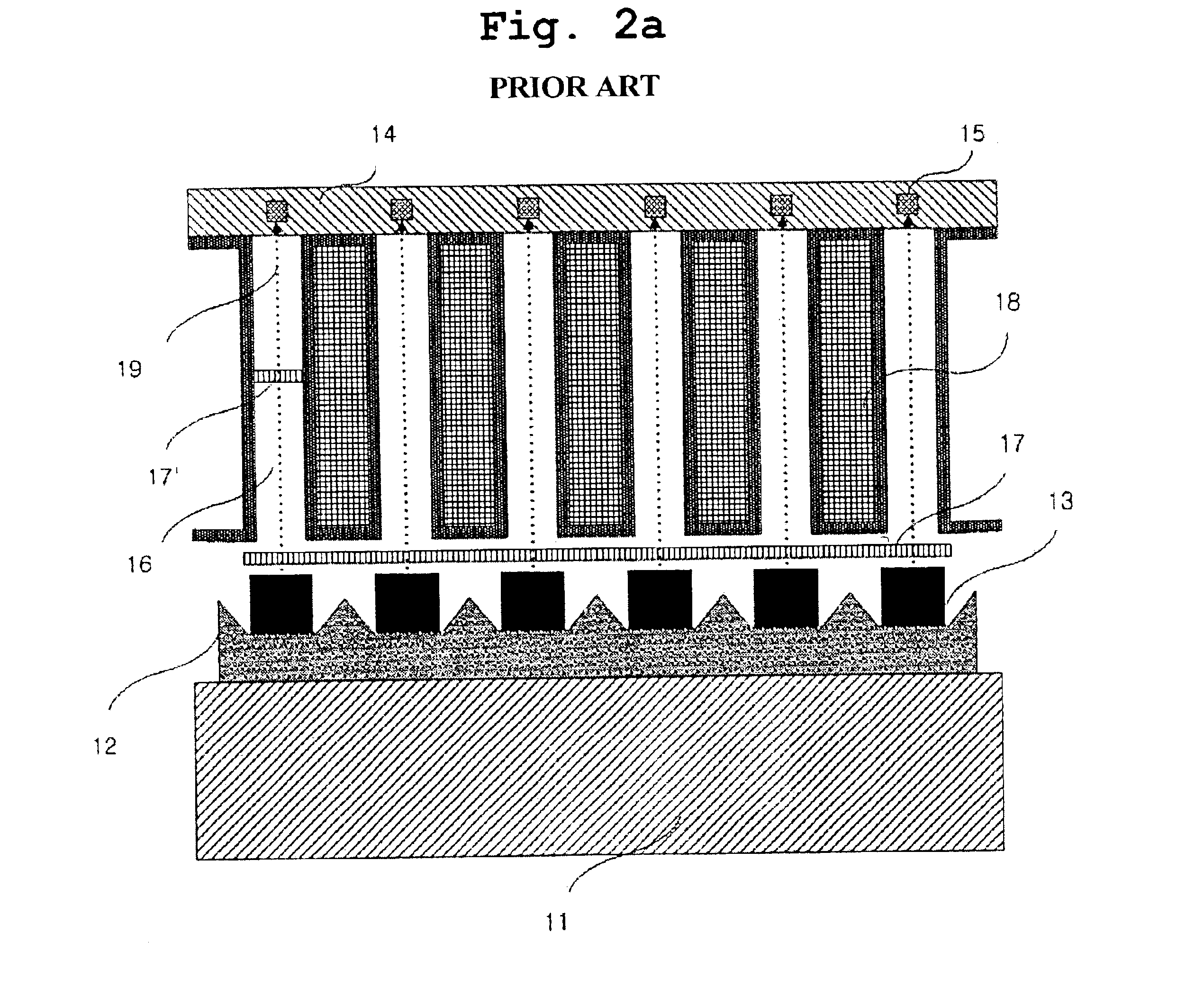Multi-layer printed circuit board and the method for coupling optical signals between layers of multi-layer printed circuit board
a printed circuit board and multi-layer technology, applied in the field of optical signal coupling block and multi-layer printed circuit board, can solve the problems of alignment errors between layers, limited wavelength of optical signals that can be transmitted through the conventional multi-layer pcb, etc., and achieve the effect of stably coupled
- Summary
- Abstract
- Description
- Claims
- Application Information
AI Technical Summary
Benefits of technology
Problems solved by technology
Method used
Image
Examples
first embodiment
FIG. 6 is a sectional view of a multi-layer PCB in which the optical waveguide and the optical signal coupling block are interconnected using a beam reflection coupling method according to a first embodiment of the present invention.
Referring to FIG. 6, the optical fiber 44 is inserted into the optical signal coupling fiber block, the part of the optical fiber 44 connected to the optical waveguide is etched at an angle of 45°, and a reflection mirror 48 is attached to the part etched at 45°. Thereafter, the positions of the optical waveguide 42 and 43 and the optical signal coupling fiber block to which the reflection mirror 48 is attached are aligned.
In this case, an optical signal input terminal of the optical signal coupling fiber block is arranged within a distance of 60 μm from the VCSEL, such that the VCSEL radiates light into the optical signal coupling fiber block.
Further, the optical signal coupling fiber block can be replaced with the pipe block, and the optical fiber can ...
second embodiment
FIG. 7 is a sectional view of a multi-layer PCB in which the optical waveguide and the optical signal coupling block are interconnected using a direct writing method(?) according to a second embodiment of the present invention.
Referring to FIG. 7, in the second embodiment of the present invention, the optical fiber 44 is inserted into the optical signal coupling fiber block, the part of the optical fiber 44 connected to the optical waveguide 42 and 43 is cut at an angle of 45°, and a surface 49 cut at an angle of 45° is polished to form a reflection surface. In this case, the polishing of the cut surface represents an operation of smoothening the cut surface so as to increase its reflectivity. Thereafter, the positions of the optical waveguide 42 and 43 and the optical signal coupling fiber block are aligned. Compared with the conventional multi-layer PCB in which the positions of the optical waveguide and the optical signal coupling block are aligned together with those of a micro ...
third embodiment
FIG. 8 is a sectional view of a multi-layer PCB in which the optical waveguide and the optical signal coupling block are interconnected using the beam reflection coupling method according to a third embodiment of the present invention.
Referring to FIG. 8, in the method for connecting the optical signal coupling fiber block to the optical waveguide of the multi-layer PCB according to the third embodiment of the present invention, the optical fiber 44 is inserted into the optical signal coupling fiber block, the optical waveguide 42 and 43 is cut at an angle of 45°, and the optical signal coupling fiber block is cut at an angle of 90°. Further, a surface formed by cutting the optical waveguide 42 and 43 at an angle of 45° is polished to form a reflection surface. A micro lens, which is the reflection mirror 48, can be attached to the reflection surface. The reason for attaching the reflection mirror 48 after the reflection surface is formed is to increase light transmission efficiency...
PUM
 Login to View More
Login to View More Abstract
Description
Claims
Application Information
 Login to View More
Login to View More - R&D
- Intellectual Property
- Life Sciences
- Materials
- Tech Scout
- Unparalleled Data Quality
- Higher Quality Content
- 60% Fewer Hallucinations
Browse by: Latest US Patents, China's latest patents, Technical Efficacy Thesaurus, Application Domain, Technology Topic, Popular Technical Reports.
© 2025 PatSnap. All rights reserved.Legal|Privacy policy|Modern Slavery Act Transparency Statement|Sitemap|About US| Contact US: help@patsnap.com



